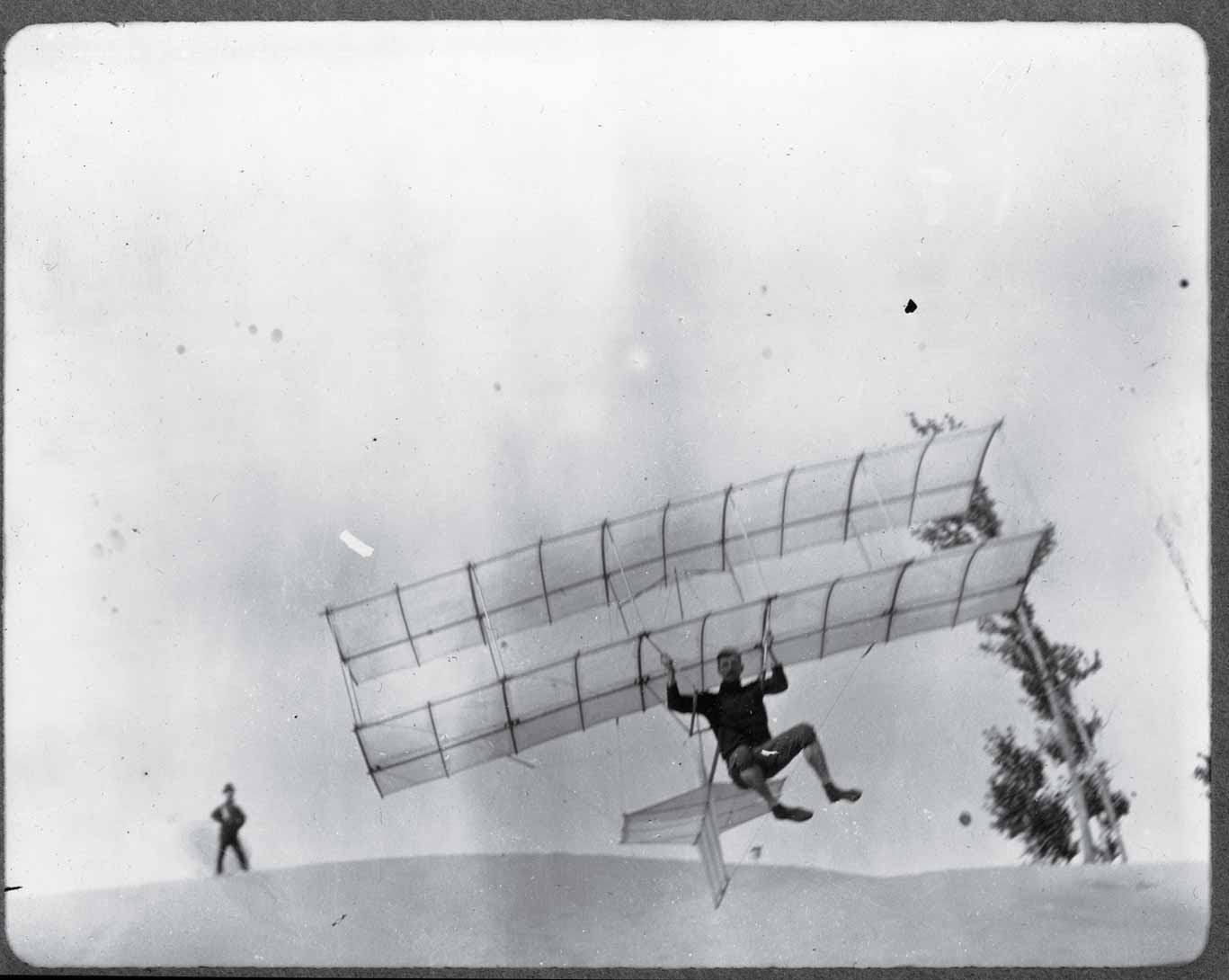
The early American aviator John Moisant was the scion of a wealthy family with extensive sugar plantations in El Salvador. In 1909, having tried on three separate occasions to actually invade and conquer El Salvador, Moisant turned to an only marginally less dangerous hobby: flying. He bought a plane and–on the strength of a couple of months’ flying experience–landed it, uninvited, in the middle of an air show in Paris in front of 250,000 people. Supernaturally handsome and supremely fearless, Moisant rapidly became one of the most famous flyers in the world. Orville and Wilbur Wright hated him.
Birdmen, by Lawrence Goldstone, is a meticulously researched account of the first few hectic, tangled years of aviation and the curious characters who pursued it, with a particular focus on the Wright brothers and their rivalry with fellow pioneer Glenn Curtiss. The Wrights live on in the popular imagination as American heroes: humble, self-made Midwestern prodigies of know-how and gumption. And they were all that. But as it turns out, that’s not all they were.
Growing up in Dayton, Ohio, the Wrights dropped out of high school to pursue careers first as printers, then as bicyclemakers and finally as aspiring aviators. Coming from the bicycle trade, Wilbur (the master theorist and true genius of the two) “understood almost by instinct that stability, not propulsion or even lift, was the crucial element of flight.” Working with little encouragement or support, they met failure after failure with dizzying leaps of insight and an iron resolve.
That unbending disposition was a product of their upbringing: their father was a bishop in a Christian splinter sect. It served them well in their work and poorly everywhere else. They believed themselves to be the true fathers of powered flight. As soon as they could, they patented their work and started suing the bejeezus out of anybody who came near it. Wilbur summed up their position in 1910: “We made the art of flying and all the people in it have us to thank for it.”
They had plenty of targets. The Wrights’ success kicked off a veritable aerial stampede. Curtiss, another graduate of the bicycle-repair school of engineering, was the most conspicuously gifted of the Americans, and he had the backing of no less an eminence than Alexander Graham Bell. (Bell’s own early aircraft was a massive kite constructed from 3,393 red silk tetrahedrons; its only flight ended in a crash.) But the Wrights’ obsession with their patents stifled innovation, and it was years before the American airplane industry recovered.
Meanwhile, aviation left the Wrights behind. They all but ceased their engineering efforts, and their Wright Flyers became more and more obsolete. It didn’t help that the business of flying quickly became the province of flashy daredevils like Moisant, who competed in air shows for huge cash prizes. The stiff, sober Wrights were hardly media-genic.
All this very earthbound wrangling stands in stark contrast to the transcendent exuberance of those first few forays into the air. In its power to evoke an age when flying meant terror and exhilaration, not cramped seating and bad food, Birdmen is a worthy companion to Richard Holmes’ marvelous history of ballooning, Falling Upwards. “The modern aviator has no conception of what those early planes were like,” one pilot wrote. “The stability was nil–flying them felt like sitting on the top of an inverted pendulum ready to fall off to either side at any moment.” Many of them did. By the end of 1910, less than a year after his first flight, Moisant died in a crash near New Orleans.
More Must-Reads from TIME
- Donald Trump Is TIME's 2024 Person of the Year
- Why We Chose Trump as Person of the Year
- Is Intermittent Fasting Good or Bad for You?
- The 100 Must-Read Books of 2024
- The 20 Best Christmas TV Episodes
- Column: If Optimism Feels Ridiculous Now, Try Hope
- The Future of Climate Action Is Trade Policy
- Merle Bombardieri Is Helping People Make the Baby Decision
Contact us at letters@time.com